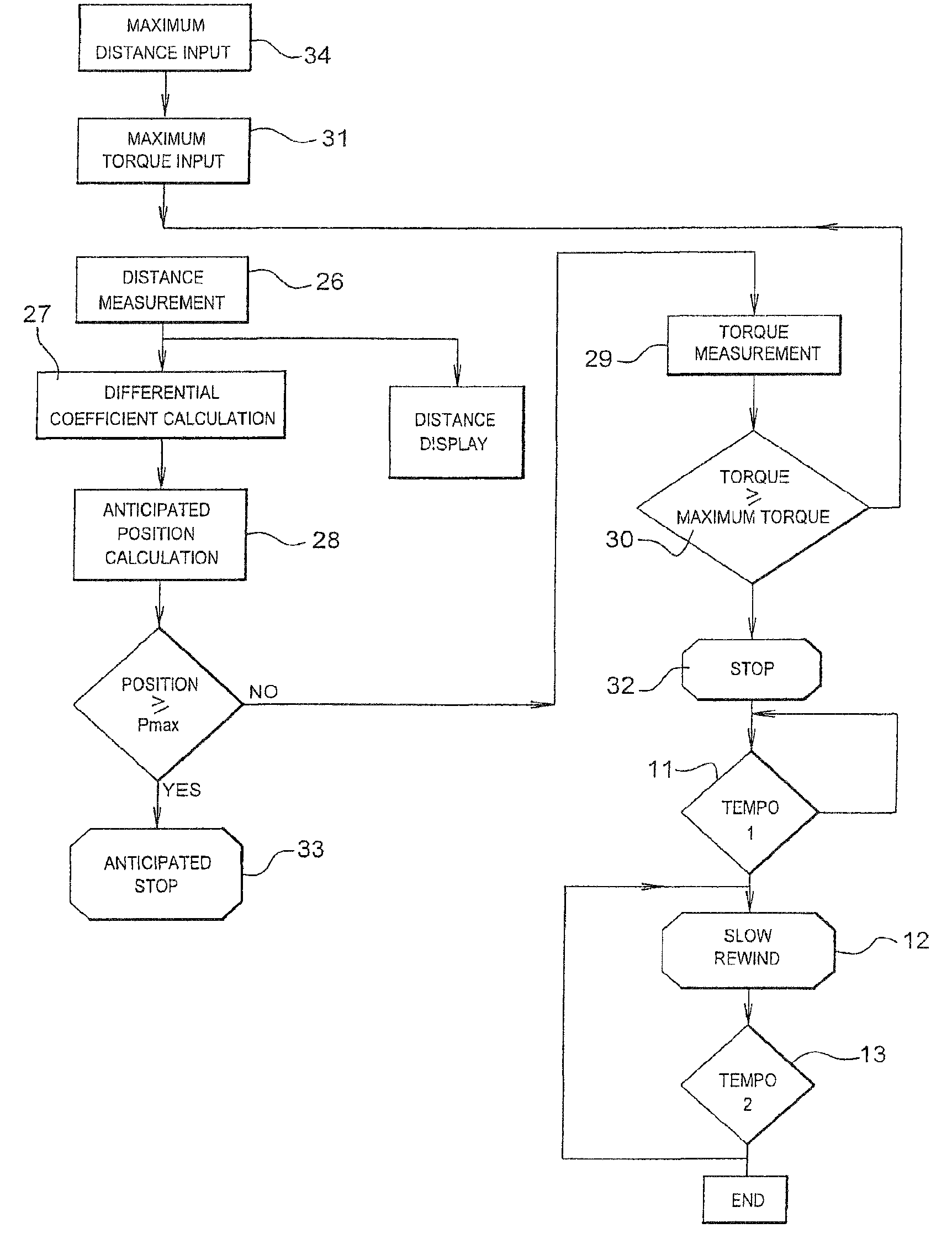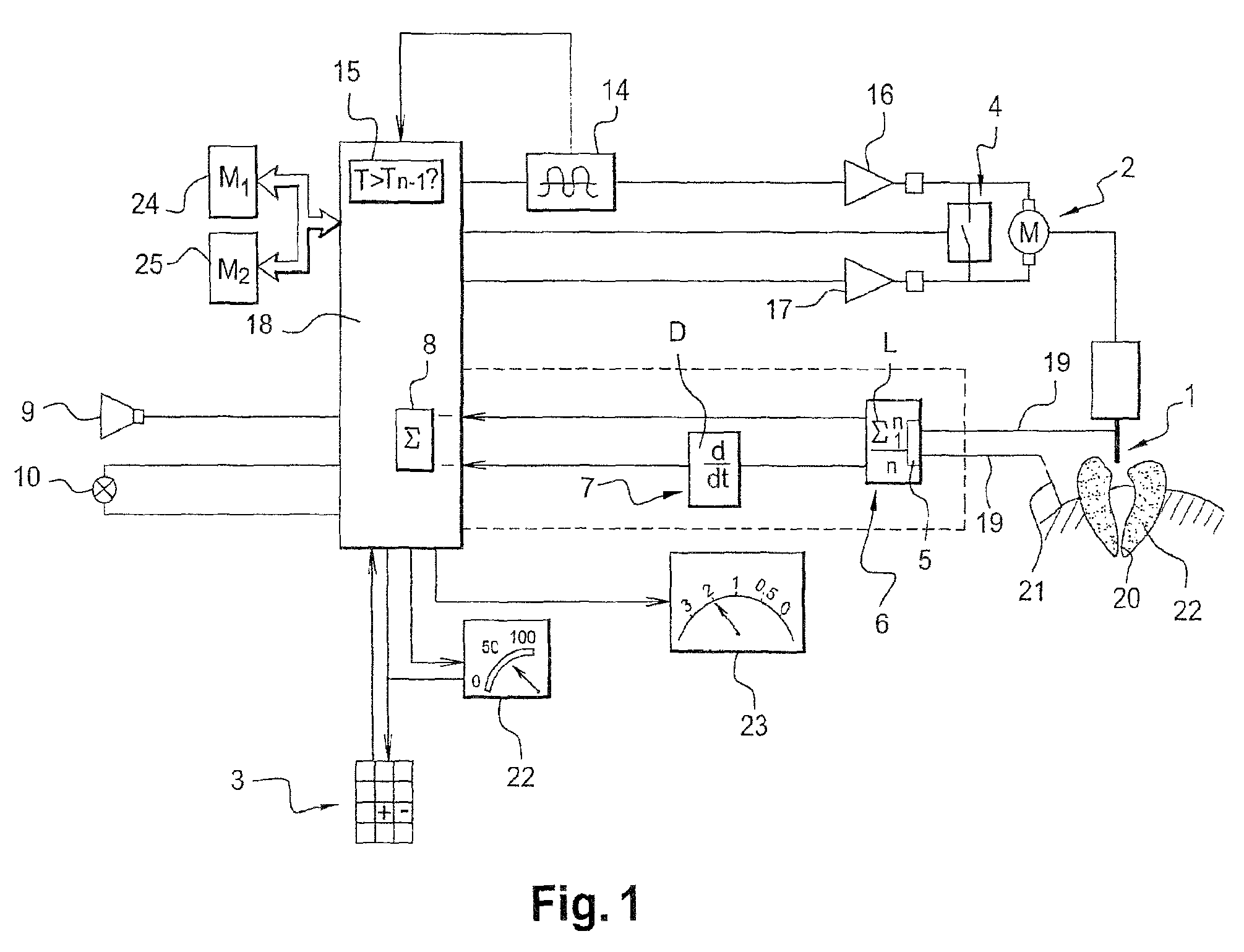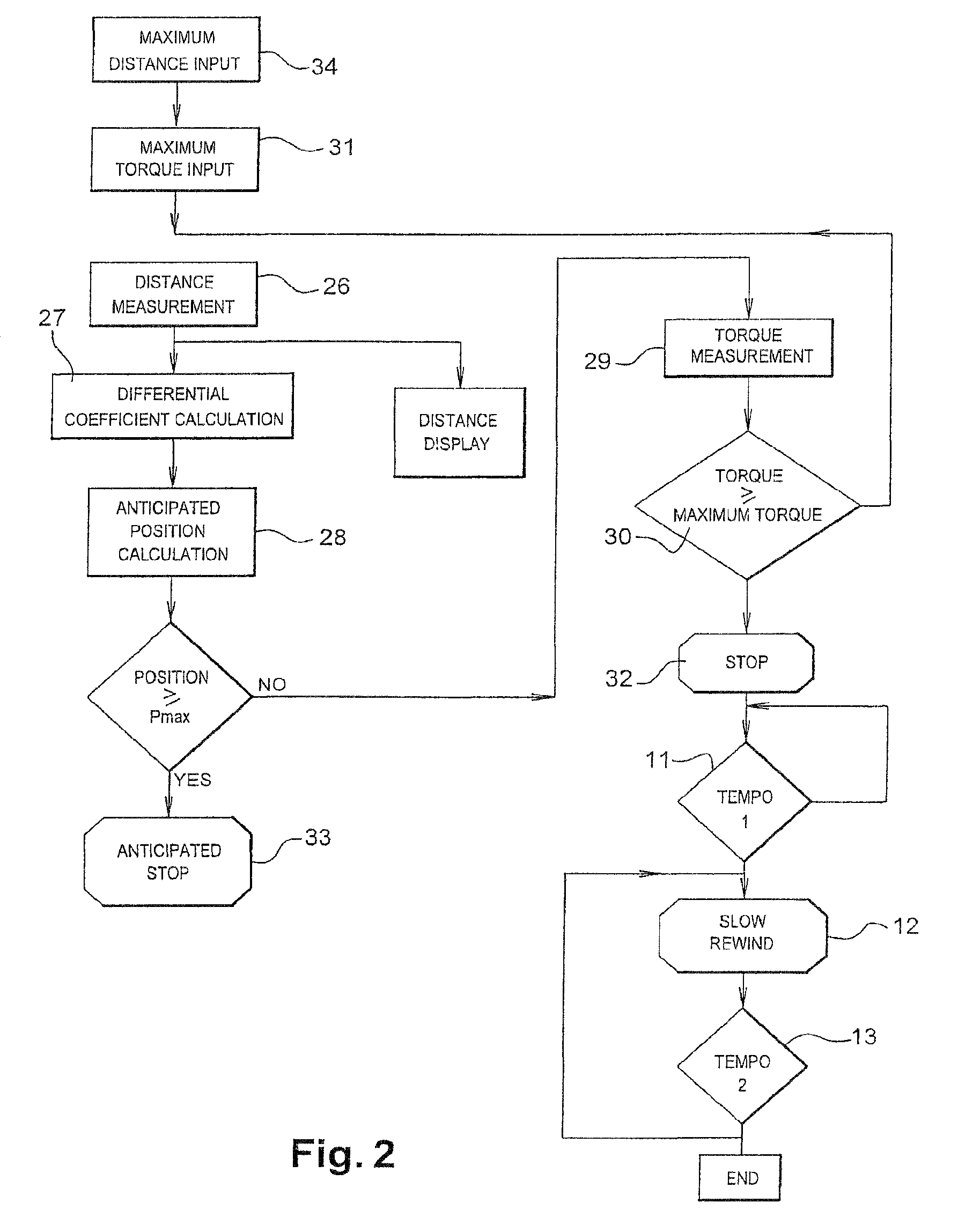Rotatable file dental treating device
a technology of dental treatment and rotating files, which is applied in the field of rotating file dental treatment devices, can solve the problems of non-negligible source of errors, limited safety means for avoiding file breakage, and significant delay in the measurement of file position, so as to minimize the fatigue of the file and the risk of breaking the latter in the tooth
- Summary
- Abstract
- Description
- Claims
- Application Information
AI Technical Summary
Benefits of technology
Problems solved by technology
Method used
Image
Examples
Embodiment Construction
[0036]The dental treatment device shown in FIG. 1 comprises a rotary file 1 that is driven by a motor 2.
[0037]The device comprises, according to the prior art that is described in the document EP 0 966 237, a system for measuring the distance from the file 1 to the apex 20 of a tooth 22. According to the example, this system is based on the use of the file as a first electrode and the use of a second electrode 21. The electrodes are connected by electric connections 19 to first measuring means 5 combined with first calculating means 6. The measuring means according to FIG. 1 comprise an analog part 5 and an analog-digital conversion part, whereby the calculating means 6 comprise means for summation of a series of measurements and averaging by division of the sum of measurements by the number of measurements, whereby this operation is carried out, for example, within a microprocessor 18.
[0038]In the example of FIG. 3A, the analog-digital conversion part is shown under reference 5′.
[0...
PUM
 Login to View More
Login to View More Abstract
Description
Claims
Application Information
 Login to View More
Login to View More - R&D
- Intellectual Property
- Life Sciences
- Materials
- Tech Scout
- Unparalleled Data Quality
- Higher Quality Content
- 60% Fewer Hallucinations
Browse by: Latest US Patents, China's latest patents, Technical Efficacy Thesaurus, Application Domain, Technology Topic, Popular Technical Reports.
© 2025 PatSnap. All rights reserved.Legal|Privacy policy|Modern Slavery Act Transparency Statement|Sitemap|About US| Contact US: help@patsnap.com



